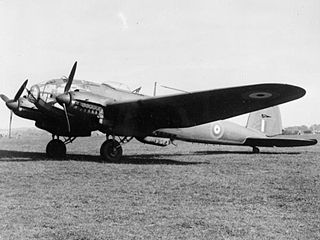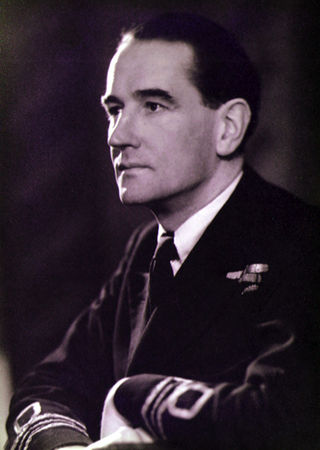
Ian Lancaster Fleming was a British writer, best known for his postwar James Bond series of spy novels. Fleming came from a wealthy family connected to the merchant bank Robert Fleming & Co., and his father was the Member of Parliament (MP) for Henley from 1910 until his death on the Western Front in 1917. Educated at Eton, Sandhurst, and, briefly, the universities of Munich and Geneva, Fleming moved through several jobs before he started writing.

A commando is a combatant, or operative of an elite light infantry or special operations force, specially trained for carrying out raids and operating in small teams behind enemy lines.

The Naval Intelligence Division (NID) was created as a component part of the Admiralty War Staff in 1912. It was the intelligence arm of the British Admiralty before the establishment of a unified Defence Intelligence Staff in 1964. It dealt with matters concerning British naval plans, with the collection of naval intelligence. It was also known as "Room 39", after its room number at the Admiralty.

The Commandos, also known as the British Commandos, were formed during the Second World War in June 1940, following a request from Winston Churchill, for special forces that could carry out raids against German-occupied Europe. Initially drawn from within the British Army from soldiers who volunteered for the Special Service Brigade, the Commandos' ranks would eventually be filled by members of all branches of the British Armed Forces and a number of foreign volunteers from German-occupied countries. By the end of the war 25,000 men had passed through the Commando course at Achnacarry. This total includes not only the British volunteers, but volunteers from Greece, France, Belgium, Netherlands, Canada, Norway, Poland, and the United States Army Rangers and US Marine Corps Raiders, which were modelled on the Commandos.
Patrick Dalzel-Job was a British naval intelligence officer and commando in World War II. He was also an accomplished linguist, author, mariner, navigator, parachutist, diver, and skier.

Operation Jubilee or the Dieppe Raid was an Allied amphibious attack on the German-occupied port of Dieppe in northern France, during the Second World War. Over 6,050 infantry, predominantly Canadian, supported by a regiment of tanks, were put ashore from a naval force operating under protection of Royal Air Force (RAF) fighters.

No. 3 Commando was a battalion-sized Commando unit raised by the British Army during the Second World War. Formed in July 1940 from volunteers for special service, it was the first such unit to carry the title of "Commando". Shortly afterwards the unit was involved in a largely unsuccessful raid upon the German-occupied Channel Island of Guernsey.

No. 4 Commando was a battalion-sized British Army commando unit, formed in 1940 early in the Second World War. Although it was raised to conduct small-scale raids and harass garrisons along the coast of German occupied France, it was mainly employed as a highly trained infantry assault unit.
A number of real-life inspirations have been suggested for James Bond, the fictional character created in 1953 by British author, journalist and Naval Intelligence officer Ian Fleming ; Bond appeared in twelve novels and nine short stories by Fleming, as well as a number of continuation novels and twenty-six films, with seven actors playing the role of Bond.

Operation Ruthless was the name of a deception operation devised by Ian Fleming in the British Admiralty during World War II, in an attempt to gain access to German Naval Enigma codebooks.

The 1st Special Service Brigade was a commando brigade of the British Army. Formed during the Second World War, it consisted of elements of the British Army and the Royal Marines. The brigade's component units saw action individually in Norway and the Dieppe Raid, before being combined under one commander for service in Normandy during Operation Overlord. On 6 December 1944, the Brigade was redesignated 1st Commando Brigade, removing the title Special Service and its association with the German SS.
30 Commando Information Exploitation Group RM is a battalion-sized unit of the Royal Marines and forms part of 3 Commando Brigade. The unit resources include communications, information operations, information systems, intelligence, surveillance, and Target Acquisition and Reconnaissance (ISTAR).
No. 5 Commando was a battalion-sized commando unit of the British Army during the Second World War.

No. 10 (Inter-Allied) Commando was a commando unit of the British Army during the Second World War, recruited largely from non-British personnel from German-occupied Europe. This unit was used to help co-ordinate attacks with other allied forces.
No. 48 Commando was a battalion-sized formation of the British Commandos, formed in 1944 during the Second World War. No. 48 Commando was assigned to the 4th Special Service Brigade and served in North West Europe, taking part in the Normandy landings and operations around Ostend and Antwerp before being disbanded after the war in January 1946.
No. 47 Commando is a battalion size formation in the British Commandos, formed in August 1943 during the Second World War. The Commando was assigned to the 4th Special Service Brigade and served North West Europe and took part in the Normandy Landings, operations around Ostend, Antwerp and the Netherlands before being disbanded in January 1946. No. 47 Commando has recently been reformed and now takes back on its old role as an amphibious raider, replacing what was 1 Assault Group Royal Marines.

Ralph William Burdick Izzard, OBE was an English journalist, author, adventurer and, during World War II, a British Naval Intelligence officer.

The Commandos formed during the Second World War, following an order from the British Prime Minister Winston Churchill in June 1940 for a force that could carry out raids against German-occupied Europe. Churchill stated in a minute to General Ismay on 6 June 1940: "Enterprises must be prepared, with specially-trained troops of the hunter class, who can develop a reign of terror down these coasts, first of all on the "butcher and bolt" policy..." Commandos were all volunteers for special service and originally came from the British Army but volunteers would eventually come from all branches of the United Kingdom's armed forces and foreign volunteers from countries occupied by the Germans. These volunteers formed over 30 individual units and four assault brigades.
No. 14 (Arctic) Commando sometimes also called the Special Commando Boating Group, was a 60-man Commando unit of the British Army during the Second World War. The commando was formed in 1942 for service in the Arctic and was disbanded in 1943.











